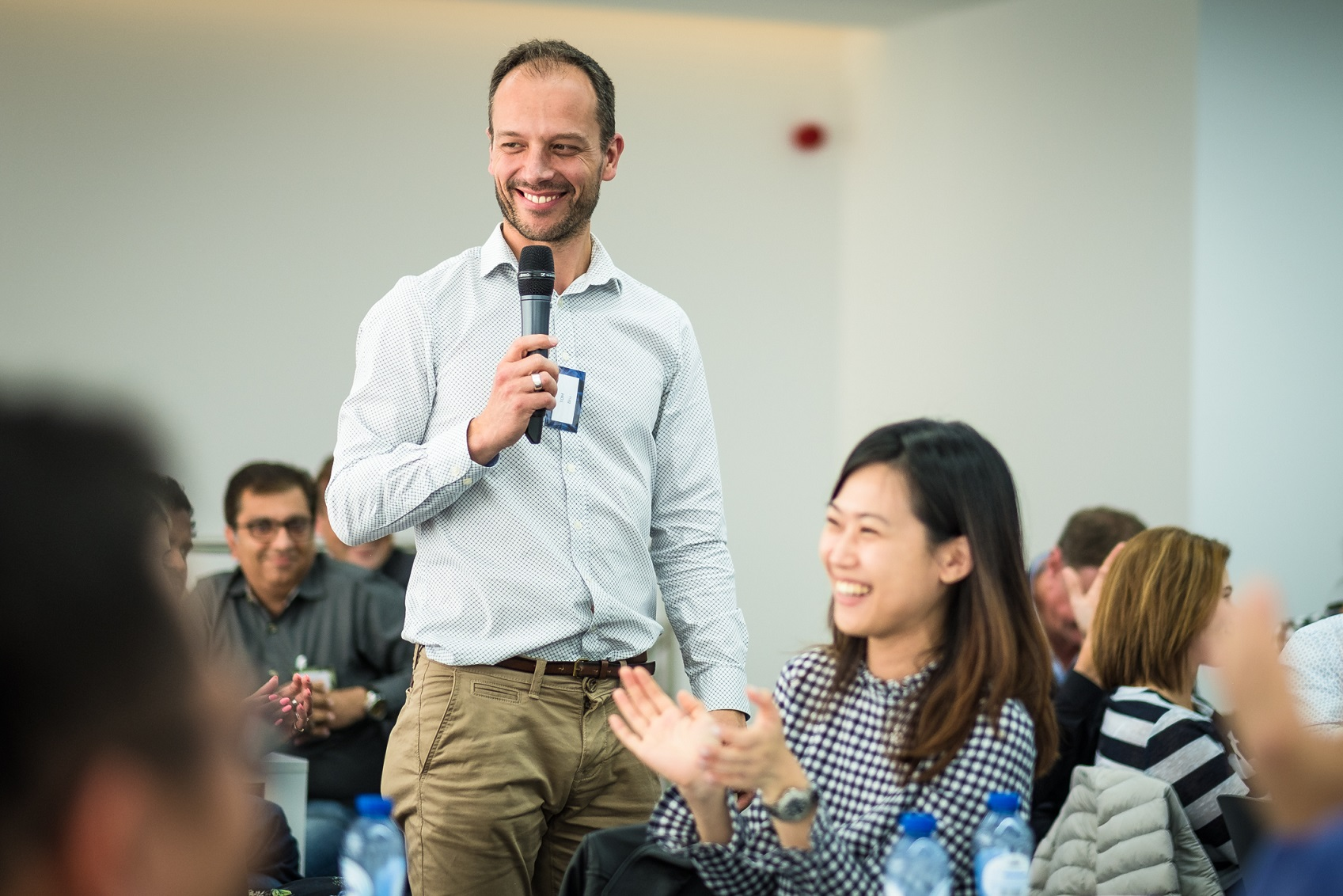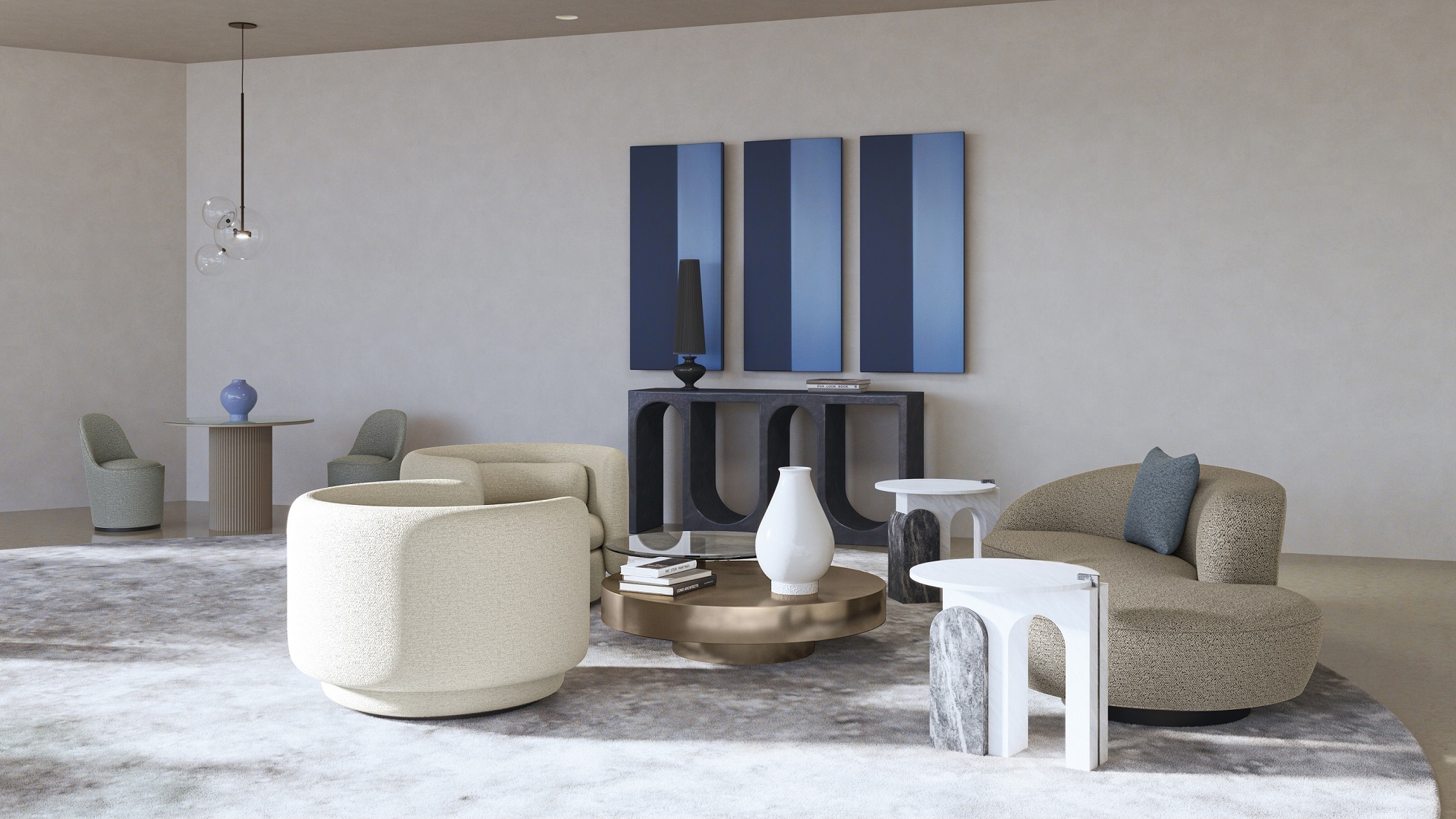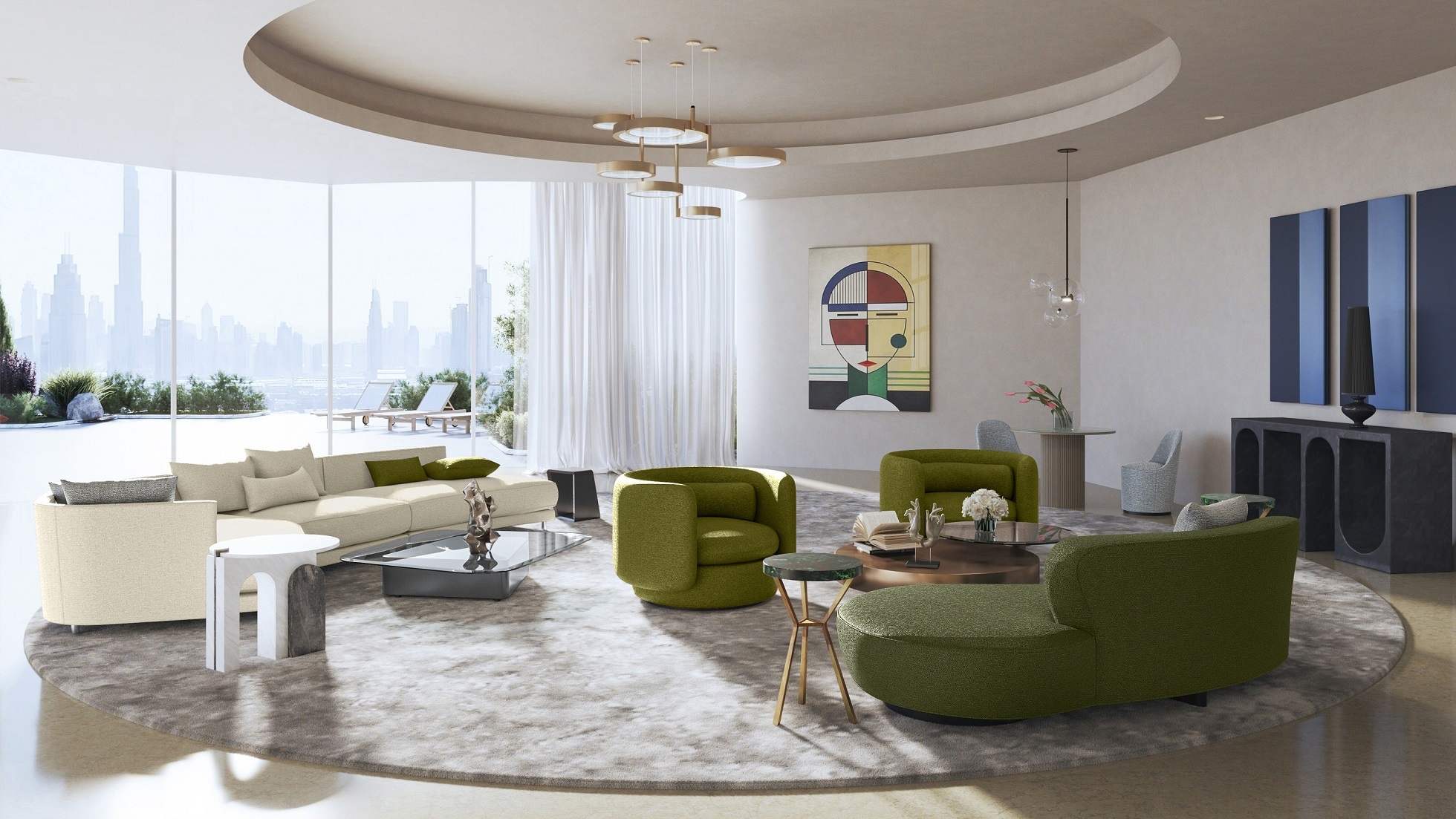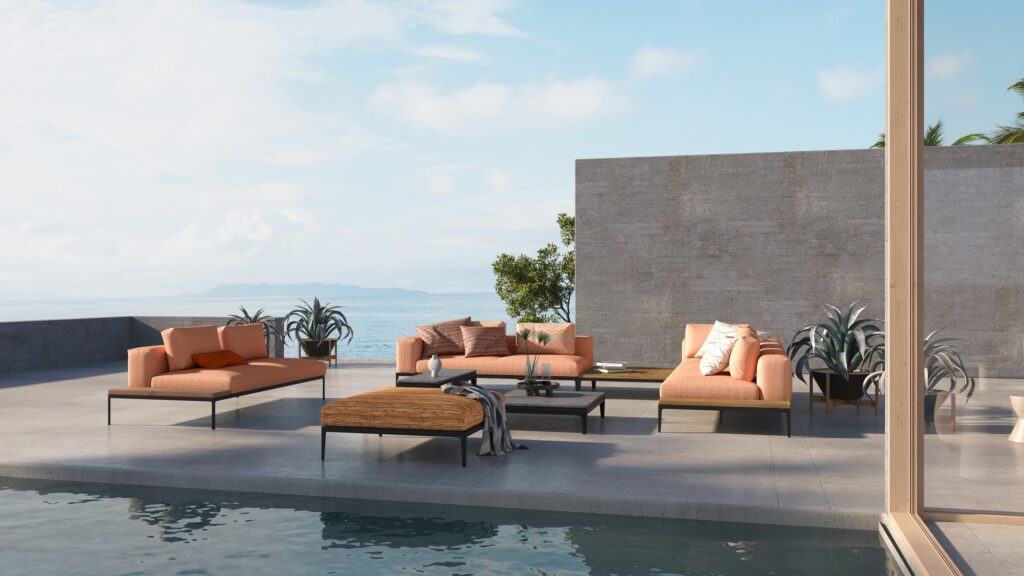Innovation, digital technology, and our need for a more sustainable textiles industry
Welcome to the second part of our interview with Tom Stevens, our Marketing Director, who is also closely involved in all our innovation projects. The first part of our interview focused on how consumers, technology and Covid-19 have reshaped the textiles industry. Read it here.
Today we focus on digital fabrics technology and the complicated but actionable story of sustainability in the textiles industry.

Let’s talk about digital twins: what are they? What do they have to do with FibreGuard fabrics?
TOM STEVENS: When it comes to digital twins, Twinbru is our service that digitises fabrics and provides high quality renders of interior furnishings and scenes with 3D digital fabrics that match the actual fabrics. Twinbru covers everything that has to do with the digital twins of FibreGuard fabrics and all the related services we can offer in that context.
In this way, Twinbru is the digital twin of the Bru company, and becomes the digital representation of Bru with its real physical fabrics, including FibreGuard fabrics.
We conceived Twinbru as a brand to start making our network aware of our innovations in this domain, and the need for digital transformation of all our customers and partners. It also promotes our rendering and modelling services towards these partners.
In the future, Twinbru can be used a bit wider to market our FibreGuard, FR-One and Bru fabrics that have been digitised with that Twinbru label. It will then become a qualifier suggesting that the fabrics you see with that label holds that set of services we offer under the Twinbru flag.
To explain what drives the innovation of Twinbru, we must look at one of our corporate values at Bru and that is our be curious value. Bru has always been innovating in terms of
- structuring distribution processes
- developing affordable on-trend fabrics
- developing scalable backend solutions in the form of software packages offering customer-oriented services
- automating warehousing and logistics
- standardising ERP systems for the whole group of partner companies
- paperless offices, you name it.
So as soon as we saw major movement in the domain of computer graphics and visualisation technology, Twinbru could just be considered as the next big, innovative step for Bru. That being said, the development of Twinbru came with much more in-house research and development than we had been doing for previous innovation tracks.


There are two perspectives when you look at the impact of digital fabric twins on Bru as a textile business.
- Twinbru’s first impact was felt internally in our company. It involves multiple disciplines and departments. Roughly 50 people are currently working on these digital innovations, in one or another way, which is extremely significant for a company like Bru.
- Secondly there is the external impact on the wider business. It impacts our customers and partners. The integration of strategic platforms across our entire network looks very promising. With Twinbru we hope to help our whole surrounding ecosystem of partners, suppliers, and customers to take another step into the digital era. We hope to reach a lot more people (and possibly customers) than we would be able to reach with more traditional sales and marketing tools that we have been working with in the past.
So you’re saying that Twinbru’s offering would not have been possible maybe even five years ago?
TOM STEVENS: Yes! Mainly because the technology to achieve it was not advanced enough. We wouldn't have been able to make it all work.
The scanning technology, for example, was not there yet.
Algorithms to produce such high-quality visualisations as the ones we have available right now did not exist yet.
Cloud solutions offering enormous additional computing power to produce huge amounts of renders in a doable timeframe…these solutions just did not exist yet five years ago.
So the evolution in digital tech was vital to get where we are today with Twinbru. We also needed that time ourselves to gain this expertise, to get more than 10,000 fabrics digitised in a qualitative way and employ the available technology in the right way. We needed that research and development time to be able to offer our Twinbru services. This investment of time makes this a huge challenge for other businesses that might want to start this journey.
Why is the tech supporting digital fabrics technology special?
TOM STEVENS: In my eyes, digital fabrics technology is unique because it unlocks a new world of possibilities. The digital fabric twin is the counterpart of the physical fabric, but in a digital world.
But to define a digital twin I would like to come back to the description I used earlier as the digital counterparts or a copy or a replica of the physical thing, which is the physical and tangible fabric in our case.
The crucial difference between a regular digital photo of a fabric and a fully realised digital fabric twin is that the digital twin can start leading its own life in a digital environment and ultimately even enhance its physical counterparts and the physical environments in future applications.
Related read: Digital prototyping: the future of sofa design
Digital twin technology empowers us to use our fabrics in virtual environments and to apply these fabrics to other objects in a digital world. They enable you to digitally enhance the fabric by adding digital properties to that twin.
What would you define as the most valuable features of digital fabrics tech?
TOM STEVENS: When people start exploring digital fabrics technology, I think we need to distinguish four important aspects.
- It enables customisable content for design and commerce environments. As for the content in online environments it is key to be able to show all diversity of a fabrics collection, for example. Every colour of a fabric needs to be represented and preferably also on multiple models to illustrate multiple applications of that fabric.
- The digital twin is the twin of a real, physical fabric product that can be bought.
- The digital fabric twin needs to be of superior quality to make sure it is a perfect representation of the product. To convince people during exploration and avoid disappointment after the sales process, the digital twin needs to represent the real fabric with an impeccable quality.
- We need to have generically applicable formats to be able to exchange these digital twins between different platforms and technologies in a way that does not sacrifice quality.
We put these four aspects front and centre while developing our textures library and services at Twinbru, so that interested partners can be confident in the offering we’re delivering.
Can you talk about any tangible benefits of digital twins for the end-user?
TOM STEVENS: We have what we call an imagination gap. It exists in the physical world and you feel it when you’re having to select a fabric colour for a sofa, for example, on the shop floor, and you’re working with a limited set of physical fabric samples. It is a familiarly frustrating experience, as you can never be sure that the finished product will look like it does in your imagination.
Concrete benefits we can offer our customers and partners at this point lie in the ability to produce a huge diversity of visualisations (renders, as they are called) to bridge this imagination gap.
With our render capacity, we can illustrate the full colour range of a collection in several applications – on sofa models, for example, on chair models, on beds, poufs, cushions, and curtain installations. If you can think up anything to put a fabric on, we can visualise it with the tools we have available at this point.
We can also help our customers to create specific interior scenes or furniture models that they can apply our fabrics to. This is very useful to furniture manufacturers, to name one example: we can help them in creating digital renderings of their specific products.
This accelerates and individualises the production of great marketing content. Then this custom content, together with our digital fabric twins, can be used in applications like configurators, virtual reality environments, and augmented reality applications, etc.

A 3D digital rendering of modish armchairs in a bouclé upholstery fabric from FibreGuard
How are digital fabric twins created?
TOM STEVENS: To create a first-class digital twin it is essential to capture as many components of our fabrics as possible. We scan the fabric under several lighting conditions, from several angles. Then it goes into texture editing and post-production where it’s enriched with metadata so we can use it in all kinds of systems.
That post-processing might consist of, for example:
- Fine tuning the colour of a scanned fabric
- Removing the tiling so that no lines are visible when digital textures are stitched together on a piece of digital furniture
- Adding some visual noise to the scan to make it look more realistic and look more like the real, tangible, and physical fabric.
How long has this been in development?
TOM STEVENS: We’ve been developing our own digital fabrics technology since 2017. Twinbru is a leader in the field of fabric digitisation, simply because we started developing this in 2017. Since then we’ve been busy developing and growing our expertise in this digital tech space with our team of highly skilled 3D and computer graphics specialists.
We developed our own software to produce high quality visualisations at an astonishing speed. To date, thanks to our work on top-notch scanning devices, we’ve digitised more than 10,000 of our fabrics.
We refactored our systems architecture to make all these more digital operations scalable. This was needed to be able to produce huge quantities rendered fabric visualisations with the right metadata and then distribute them towards multiple systems that our partners and customers can access.
We formed strategic partnerships with several companies to build new applications. All of this was to offer our fabric textures in the best possible way within emerging digital ecosystems where we could promote them further and gain our reach.

I’ve heard you say before that sustainability is an ecosystem in the textiles industry. Can you elaborate on this?
TOM STEVENS: The textiles industry has an enormous ecological footprint. Therefore, sustainability is the only way forward for it as an industry.
Our industry is extremely intertwined with a huge number of stakeholders. As only one company or one link in the chain, it is not possible to make a difference and to make our industry more environmentally viable. This is what I mean by the term ‘ecosystem’.
We need to work together. We must make all other stakeholders in this ecosystem more aware of the challenges that lie ahead of us. We need to take them along on our journey towards a more sustainable business and that is something you don't achieve overnight.
Therefore, speeding up our efforts as soon as possible in this area is extremely important now to change the ecosystem for the goods of our future generations.
I want to illustrate the contribution of digital fabrics to sustainability:
People do not buy a fabric without being able to see it. We already spoke about the fact that they want to touch it in most cases, but without being able to see it, it will not be possible at all to sell a fabric.
Fabric sample production, however, requires extensive additional materials, significant amounts of fabric, and transportation. The digital twins and visualisations we are currently able to produce require considerably less fabric, resources, and material. By using digital twins and visualisation, we decrease the need for physical samples even more.
Once the customer refines their fabrics selection based on a digital sample, the amount of the physical sample books and hangers that are needed in the markets and throughout the sales process is reduced. Ultimately there is a quantifiable positive impact on our industrial footprint and sustainability overall.
So we must adopt digital technology in a tactile world?
TOM STEVENS: Exactly. The relationship between fabric and technology is indeed important and to future-proof the fabrics business we must embrace digital technology. There’s this assumption that touch is essential to be able to sell fabrics, and without having touched a fabric, one will never buy a fabric.
But to be honest, I see multiple ways in which digital technology is of value to fabrics and the future innovation of the fabrics business.
Digital technology might even open the possibility of producing fabrics in other, inventive ways that could not be imagined before. New opportunities are in sight for the composition of the yarns themselves.
And, the need, or I can maybe say, even the need for touching fabrics will be challenged. Not the fact that people will keep on wanting to touch these fabrics but the way in which that touch is enabled might at a certain point become fully possible through digital technology.
In the textiles world there is a fear of embracing new tech. There is a real fear that a real human experience is taken away when you select fabrics by viewing them remotely.
Tactile interaction remains important, but I don't think that means we can't complement this with other technology to create visualisations and experiences. Who knows, at a certain point, technology might even be able to fully replace real touch and provide that tactile experience without having the fabric in your hands and while providing the perfect simulation of that touch digitally.

Innovation in business is a process of reimagining
TOM STEVENS: Innovation is the thorough rethinking of existing products, processes, services, even experiences. Innovation in business is centred on providing more value to the end-user.
Innovation is not a specific technological implementation that has a beginning and an end. It’s a process, a mindset you need to embed in your daily operations and your organisational strategic discussions. It’s a mindset of constantly unravelling things, evaluating things, considering, and thinking about alternative ways to solve problems. It’s a process of validating hypotheses and testing prototypes that’s shaped with an increased value for the end user in mind.
In my opinion at least, you will achieve nothing innovative when you’re isolated away from society in an ivory tower. Innovation comes from working as closely with people as possible, preferably in co-operation with real users, with an understanding of the market you’re operating in.
Reinventing the textiles industry in a connected world
The biggest limitation to sustainable product design and manufacturing may be our imagination. What can you imagine?
EXPLORE TWINBRU, OUR CUTTING EDGE NEW VENTURE, AND BROADEN YOUR HORIZONS.